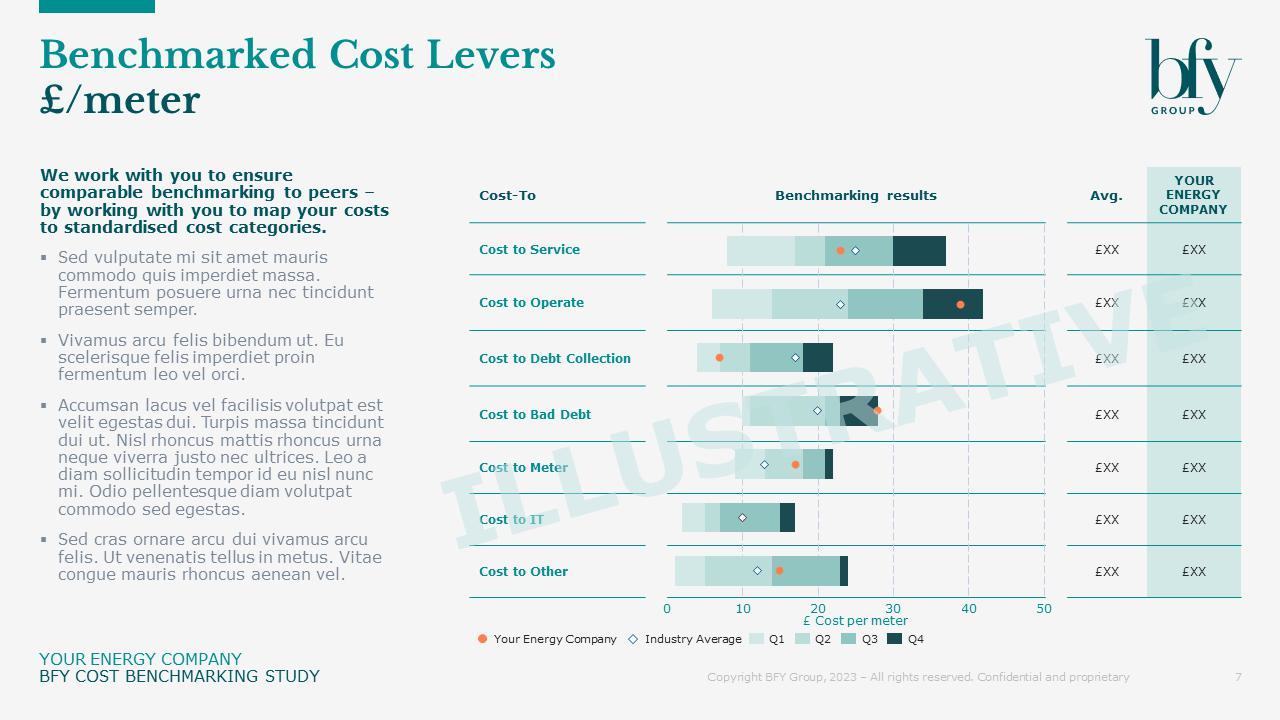Cost pressures are everywhere in today’s economy, and while the UK’s recession looks like it may be short-lived, the focus on cost and value is far from over.
When spending money, people typically ask themselves:
- “Do I really need it?”
- “Am I paying too much for it?”
The first question, at an individual level, is a personal conundrum, and could have multiple reviews/opinions on it alone. To crudely summarise, usually, if there’s a ‘personal benefit’ from the spend, then it stacks up. But for the second question, how can you define what’s ‘too much’, especially in a business context?
For consumers, price comparison sites have become the norm - we see them for energy, credit cards, mortgages, and even everyday retail goods. You can generally get a good indication on cost and value before spending, but what’s the answer for businesses?
Where can cost savings be made?
When business cost pressures mount and decisions need to be made, it’s difficult to make effective strategic changes without understanding the ‘need’, and how existing costs stack up against others in a similar situation.
There are generally two main approaches to gain a better understanding:
- Internal Analysis – Reviewing the performance of the business to understand where costs sit and which areas are risky or ‘value-creating’. In which areas could cost advantages be gained and how do we maximise these?
- External Analysis – Assessing the performance of other businesses in the market. In which areas are they spending? Are we performing at the same level? How do we know this?
This blog shows how a combined approach can inform your cost transformation goals, and provide the insight for achieving them, through a focus on understanding value and then leveraging cost benchmarking.
Looking inward, without being short-sighted
When pushed to make savings, many companies often make sweeping moves to cut a % of cost, looking at various departments through lenses of ‘investment’, ‘cost’, and ‘revenue’ centres. Typically, costs are then removed from areas classed as ‘overhead’, and the company begins looking for ways to find efficiencies to do more with less.
But when the ultimate goal of the cost saving is to deliver on customer expectations more effectively and efficiently, this can often be short-sighted. Looking broader across full end-to-end servicing processes can enable better sight of how cost is split across that ‘end-to-end’; thus enabling prioritisation of the various cost components driving that process. This analysis becomes even more valuable when you add the ability to compare these components against competitor positions for the same elements (which we come onto below).
Internal analysis can also help prioritise where key internal strengths and value-creating processes are, when adopting a SWOT analysis approach aligned to customer value. This can help highlight where core business strengths and weaknesses are, however when done standalone it can close out awareness of the bigger picture, which is often achieved only by getting an external view too.
Seeing the bigger picture with external insight
It’s very easy to compare spend numbers to previous years and see how costs have increased over time; but this may have been the case for everyone else in the market, and others have since found savings in different areas.
Typical questions can jump out:
- How do our costs stack up against competitors, in our customer servicing operation for process ‘x’?
- How many people do we have in department ‘x’ vs. our competitors?
- How much are we spending to collect debt compared to others?
These are some examples of fundamental questions required to be answered before being able to understand opportunity areas and avoid making decisions that could fix things in the short term, but negatively impact the long term.
Uncovering insight for smarter cost decisions
Business benchmarking offers a low cost and efficient means of getting closer to the answers for these types of questions. A better understanding of market positioning and the competitor landscape provide direct insight to inform decision making, while supporting idea generation and providing an alternative perspective on savings.
It can’t always be taken at face value though. Businesses have different strategic directions, and as such may be investing in a particular area as part of a longer-term strategic decision (generally linked to digital transformation or IT type investment).
Additionally, some benchmarking studies don’t fully understand the industry they’re working with – causing cost elements that can often be spread across different teams to be misinterpreted and drive inconsistent comparison figures if not properly considered.
The other key element is ‘Value’. Your servicing operation may cost more than a similar sized competitor. But without seeing how that flows through into NPS/CSAT scores, repeat custom/renewals or upselling outcomes, it’s difficult to understand the value this extra cost is creating – if you assume your competitor (rightly or wrongly) is also doing the same.
It’s therefore crucial to gain a benchmarking view from someone that understands the market well and can aid insightful decisions. Balancing this with an internal view of known end-to-end value/strength areas can help you to make smarter cost savings or investments.
How we can help
At BFY, our Cost Benchmarking study gives participants unparalleled insight into how they’re performing against competitors – across areas of cost transformation that drive profitability.
Our study provides detailed cost stack analysis, benchmarking Contact Centre, Back Office, Debt Management, IT, and Central Support functions – covering Power and Gas, and SME, mid-markets, and I&C.
We can also help with building a delivery plan to achieve the target savings identified, and provide strategic challenge on ‘where to save and where to spend’.
Below is an illustrative example of the level of insight we provide, giving a benchmarked view of your cost stack against other suppliers in the market.

If you would like to know more, please contact Jonathan Paton or Zander Cleves.
Jonathan Paton
Senior Manager
Jon specialises in Customer Operations leadership, customer contact, and operational service delivery transformation/improvement.
View Profile

